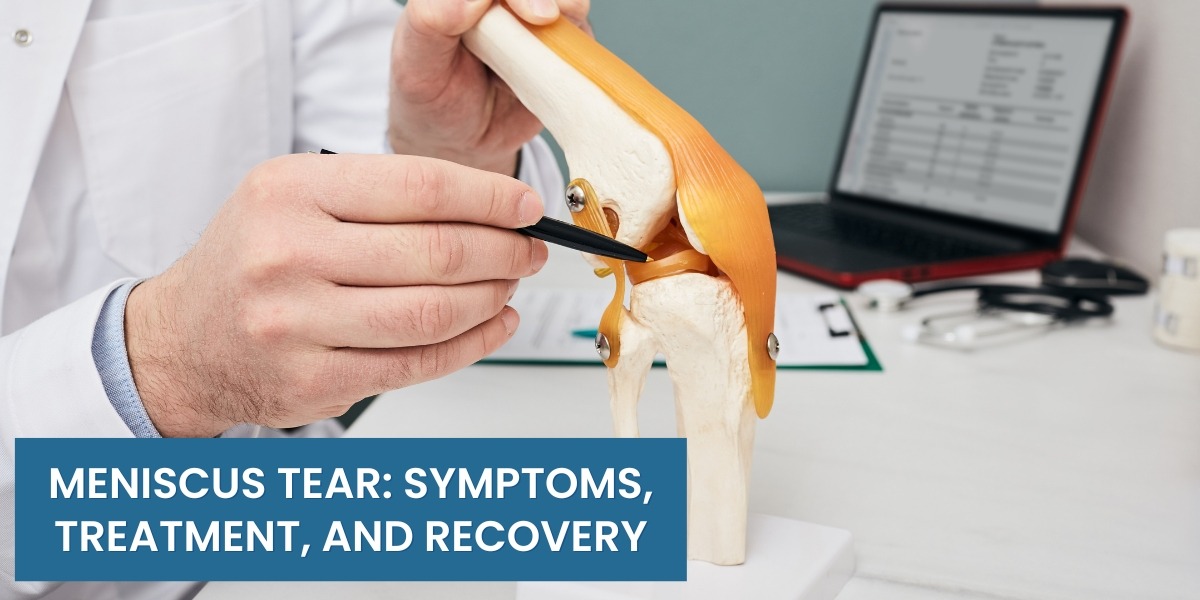A meniscus tear is a common knee injury that can cause pain, swelling, and limited mobility. Whether you’re an athlete or someone with an active lifestyle, understanding the symptoms, treatment options, and recovery process can help you manage this condition effectively.
What is a Meniscus Tear?
The meniscus is a C-shaped cartilage in the knee that acts as a shock absorber between the thigh bone (femur) and shin bone (tibia). A meniscus tear occurs when this cartilage gets damaged due to sudden twisting, deep squatting, or degenerative changes over time.
Common Causes of Meniscus Tears
- Traumatic Injury: Sudden twisting or forceful rotation of the knee (common in sports like football, basketball, or tennis).
- Degenerative Changes: Wear and tear due to aging or arthritis.
- Overuse: Repetitive stress on the knee joint.
Symptoms of a Meniscus Tear
The signs of a meniscus tear can vary depending on the severity of the injury. Common symptoms include:
- Sharp pain in the knee, especially when twisting or rotating.
- Swelling and stiffness in the joint.
- Difficulty straightening or bending the knee fully.
- A popping sensation at the time of injury.
- Knee locking or catching, making movement difficult.
If you experience these symptoms, it’s important to consult an orthopedic specialist in Pune for proper evaluation.
Diagnosis of a Meniscus Tear
To confirm a meniscus tear, doctors may recommend:
– Physical Examination: Checking for tenderness, range of motion, and specific tests like the McMurray test.
– Imaging Tests:
- MRI Scan: Provides detailed images of soft tissues, including the meniscus.
- X-rays: To rule out fractures or arthritis.
Treatment Options for Meniscus Tears
The treatment depends on the tear’s size, location, and severity.
1. Non-Surgical Treatment (For Small Tears)
- Rest & Activity Modification: Avoid activities that worsen the pain.
- Ice Therapy: Apply ice packs to reduce swelling (15-20 minutes, 3-4 times a day).
- Compression & Elevation: Use a knee brace and keep the leg elevated to minimize swelling.
- Pain Relief Medications: NSAIDs like ibuprofen to manage pain and inflammation.
- Physical Therapy: Strengthening exercises to restore knee function.
2. Surgical Treatment (For Severe Tears)
If conservative treatments fail, surgery may be required. Common procedures include:
- Meniscus Repair: Suturing the torn edges if the tear is in a repairable zone.
- Partial Meniscectomy: Removing the damaged portion if repair isn’t possible.
Arthroscopic surgery (minimally invasive) is commonly used, ensuring faster recovery.
Recovery and Rehabilitation
Recovery time varies based on treatment:
– Non-Surgical Recovery: 4-6 weeks with physical therapy.
– Post-Surgical Recovery:
- Partial Meniscectomy: 4-6 weeks.
- Meniscus Repair: 3-6 months (due to healing time for the stitched meniscus).
Rehabilitation Tips
- Follow your doctor’s and physiotherapist’s guidance.
- Gradually increase activity levels to avoid re-injury.
- Strengthen quadriceps and hamstrings for better knee support.
When to See a Doctor?
If knee pain persists despite rest and home care, consult an orthopedic surgeon in Pune like Dr. Murtaza Adeeb for expert diagnosis and personalized treatment.
A meniscus tear can significantly impact mobility, but with the right treatment, most people recover fully. Early diagnosis and proper care are crucial for a smooth recovery. If you are looking for the best orthopedic doctor in Pune, Dr. Murtaza Adeeb specializes in knee injuries and offers advanced treatments for meniscus tears. Book a consultation today for expert care!







